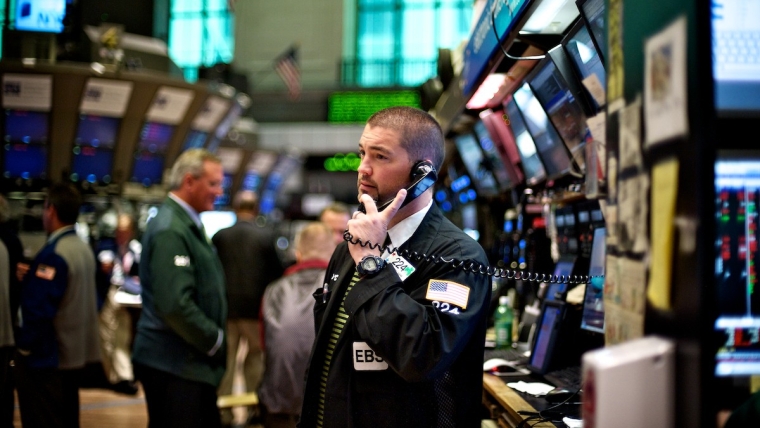
Market movements have been reasonably modest overnight, with equity markets nudging up and bond yields slipping lower. The big mover has been oil, where prices spiked after attacks on oil tankers in the Gulf of Oman, which the US blamed on Iran. The AUD has underperformed after yesterday’s labour market report revealed a higher than expected unemployment rate, while the NZD is little changed.
Markets remain in a holding pattern ahead of the key event risks over the coming fortnight, namely the FOMC meeting next Thursday morning and the G20 Summit at Osaka, at which Trump and Xi are expected to meet, the following weekend. US Treasury yields have continued to grind lower, led by the front-end of the curve, despite no major developments over the past 24 hours. The only economic data of note was US jobless claims, which remained at historically low levels and, despite the disappointment of the last payrolls release, consistent with a very tight US labour market.
The 10 year Treasury yield is 3bps lower than yesterday’s close at 2.09% and is now closing in on its post-payrolls lows of 2.05%. Market expectations of Fed cuts have continued to gradually build, with a July cut now almost fully-priced and 68bps priced-in by the end of the year. The sharp rise in oil prices (more below) hasn’t done much for market inflation expectations, with the US 10 year breakeven inflation rate falling 1bp to 1.69%, its lowest level since the start of January. While breakeven inflation reflects liquidity premia and other factors, in addition to pure inflation expectations, at face value, market pricing is consistent with PCE inflation (the Fed’s favoured measure) averaging around 1.5% over the next 10 years (breakeven inflation references CPI, which tends to be higher than PCE).
Equities have moved modestly higher, supported by the market’s growing conviction in near-term Fed rate cuts. S&P500 futures had fallen during the Asian trading session yesterday after Reuters reported that the White House Budget office said it would comply with a ban on suppliers who do business with Huawei, having requested a two year delay only a few days ago for. But the S&P500 has moved 0.8% higher from that intraday low to now be 0.4% higher on the day. More hard-line rhetoric from China on the trade war, this time from the Chinese Ministry of Commerce which said China would “fight to the end” if the US escalated the conflict, hasn’t had much impact.
Energy sector stocks (+1.3%) led gains on the S&P500 after a spike higher in oil prices after two oil tankers were attacked in the Gulf of Oman. The incidents follow similar attacks last month on oil tankers in the region and come against a backdrop heightened tensions between the US and Iran. Iran denied responsibility, but US Secretary of State Pompeo blamed Iran. Brent crude oil rose 3% overnight, to $62.50 a barrel, reversing the declines from the previous session, amid growing concerns of a possible future military conflict between the two countries.
Currency market moves have been subdued, with all the G10 currencies trading within +/-0.25% of the levels this time yesterday. The USD indices are close to flat on the day, with the decline in Treasury yields and increase in Fed rate cut expectations over the past few hours exerting some modest downward pressure on the USD.
The AUD has been the worst performing currency over the past 24 hours, after yesterday’s labour market report added to market expectations of an RBA rate cut next month. Despite a larger than expected 42k increase in jobs in May, the market focused on the unemployment rate, which held at 5.2% against expectations of a fall to 5.1%. Additionally, almost all the increase in jobs in May was part-time workers, likely boosted by temporary hiring for the election. Expectations for a July 25bp cut moved to 76% from 55% and the Australian 3 year government bond yield fell below 1% for the first time on record in response to the data. An article from RBA-watcher Terry McCrann overnight that mentions a second rate cut is now certain, but not yet, has seen a modest retracement in RBA rate cut expectations and the AUD. The AUD is 0.2% lower than this time yesterday, at 0.6920, having bounced off support around 0.69.
The GBP has been little moved by the results from the first round of voting for the Conservative party leadership, which saw Boris Johnson receive more votes from fellow MPs than the next three candidates combined. Betting markets now have Brexiteer Johnson as an 80% favourite to become the next Prime Minster.
The NZD is little changed from this time yesterday, at 0.6570. The weakness in the AUD however has seen the NZD/AUD cross move up to 0.95. In the domestic rates market, swap rates hit fresh lows yesterday, in sympathy with the falls in Australian rates after the labour market report. The 2 year swap closed below 1.4%, down 1.5bps on the day, while the 10 year swap closed down 2.75bps at 1.88%.
The monthly suite of Chinese activity data and US retail sales will be the focus today.
Get our daily currency email by signing up here:
Daily exchange rates
Select chart tabs
BNZ Markets research is available here.

We welcome your comments below. If you are not already registered, please register to comment.
Remember we welcome robust, respectful and insightful debate. We don't welcome abusive or defamatory comments and will de-register those repeatedly making such comments. Our current comment policy is here.